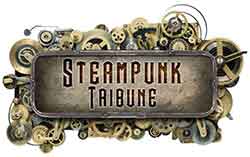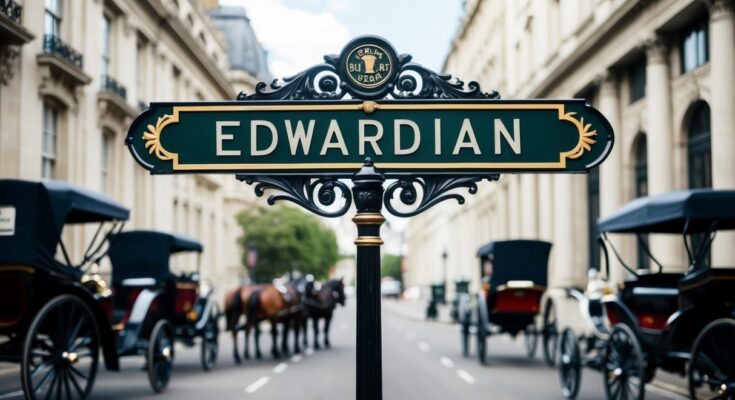The Edwardian period was a time of great transition and innovation, with the turn of the 20th century ushering in changes across social, cultural, and technological spheres. Surnames from the Edwardian era carry echoes of the preceding Victorian era, while also reflecting new social dynamics of the early 1900s. Exploring Edwardian surnames provides insight into societal norms and family lineages of that time. These names often reveal information about ancestry, occupation, and even geographical roots.

Names such as Smith, Taylor, and Brown continued in prominence during the Edwardian period, their popularity signifying occupational roles or physical characteristics. Meanwhile, the era saw a blend of traditional British surnames with those brought by waves of immigration, introducing cultural diversity to the population. The mix of these names can also offer clues about the transitions from pastoral Victorian sensibilities to the more modern Edwardian outlook on life.
Unraveling the stories captured within Edwardian surnames offers a glimpse into the lives of those who lived in this dynamic and transformative time. From well-known family names to more obscure ones, each serves as a fragment of history, offering pathways to discover more about familial connections and societal shifts. The persistence or evolution of these names within modern times underscores their lasting significance across generations.
Historical Context of Edwardian Surnames

The Edwardian Period, following the Victorian Era, saw shifts in societal values that influenced surnames. This time was marked by the ascendancy of King Edward VII, whose reign heralded changes in naming conventions.
Transition from Victorian to Edwardian Era
The transition from the Victorian Era to the Edwardian Period was marked by changing attitudes towards class and family names. During the Victorian Era, surnames often reflected occupational roles, geographic origins, or lineage. With the dawn of the Edwardian Period, there was a subtle shift towards modernity.
Industrialization played a role in transforming societal structures, leading families to adopt surnames that conveyed new social aspirations. The emergence of new social classes allowed individuals to move away from rigid occupational surnames, opting for names that reflected personal or familial achievements.
Influence of Edward VII
King Edward VII’s reign brought distinct cultural influences to the naming conventions of the time. As a monarch, Edward was known for his cosmopolitan interests and charm, which permeated the society of the period. His influence encouraged the adoption of names that echoed sophistication and elegance.
The king’s close allegiance to other European cultures also brought certain surname trends from the continent to England. Aristocratic names and titles gained popularity, as people sought to emulate the social elite’s style. Consequently, Edwardian surnames were increasingly seen as markers of identity and social standing.
Characteristics of Edwardian Surnames

During the Edwardian era, surnames not only reflected an individual’s lineage but also gave insight into their social standing and regional origins. A mix of influences shaped by language, occupation, and geography played a key role in surname development.
Etymology and Origins
Edwardian surnames often had roots in occupations, places, or personal descriptions. Many had their origins in Middle English, Old English, or Norman influences. Last names like Smith and Taylor were tied to professions, indicating trades and skills.
Place-based names such as Lancaster or Chester often signified a family’s place of origin. Descriptive surnames, like White or Brown, could refer to personal traits or appearances. This diversity illustrates the rich linguistic tapestry of the period.
Common Themes in Surnames
Common themes within Edwardian surnames included occupational and geographical references. Last names such as Carpenter or Mason were indicative of a person’s trade, while Hill or Brooks might point to geographical features near the family’s home.
Affixes, both suffixes and prefixes, played a significant role in the development of these surnames. Names with prefix “Mac” or “Fitz” often indicated lineage, meaning “son of.” Such elements reveal much about family ties and ancestry during the Edwardian period.
Class and Social Status
Edwardian surnames frequently mirrored class distinctions. Aristocratic names, such as Montgomery or Percy, carried connotations of nobility and high social standing. These names were often associated with landownership and ancient lineage.
In contrast, many common surnames were borne by the working and middle classes. Despite this straightforward association, some names, once rare or simple, gained respectability over time. Surnames thus served as markers, signaling a person’s social sphere and heritage in Edwardian society.
Surnames and Social Structure
Edwardian surnames reveal much about societal roles and origins during this period. They often indicate the professions, geographical roots, or familial connections of individuals, shedding light on the era’s social hierarchy.
Occupational Surnames
Occupational surnames denote the trade or profession of an individual or family. Common examples include Smith, indicating a metalworker; Wright, relating to craftsmanship; Taylor, referring to tailoring; and Parker, signifying a keeper of parks. These names arose from the need to identify individuals based on their economic activities.
Trades like Carter (transporter of goods) and Cooper (barrel maker) underscore the importance of certain occupations in Edwardian society. Such names reflect the economic functions that families performed, often passed down through generations. Thus, surnames like Baker and Fowler not only describe professions but also provide insight into local economic structures.
Locational Surnames
Locational surnames reveal the geographical origins of a family. This type of surname often emerged when people migrated and needed to be distinguished from others by their place of origin.
Names such as Parker might also originate from locational foundations, referring to an area where the profession was prominent. Turner, while typically occupational, could also have locational nuances in certain regions. These surnames helped identify outsiders, linking individuals to specific landscapes or settlements. As communities grew, locational surnames played a key role in establishing identity and social standing.
Patronymic and Matronymic Surnames
Patronymic and matronymic surnames are derived from the names of parents, often signifying son or daughter. This method of naming is rooted in familial lineage, highlighting the importance of family connections.
Although less common in English-speaking Edwardian society, examples can be seen in surnames such as Ward, which might relate to either a guardian figure or a family member named Edward. These names often trace ancestry, providing historical links to family origins and their place within the broader societal structure. They serve as a testament to the significance of heritage and lineage in personal identity.
Surnames Derived from Nature
Edwardian surnames often reflected the natural world, highlighting connections to flora, fauna, and geographic features. These names not only revealed the character or landscape surrounding individuals but also served as identifiers for families across generations.
Flora and Fauna
Surnames like Wood and Green illustrate a strong connection to plant life. The name Wood could refer to one’s residence near a forest or involvement in the woodworking trade. Similarly, Green might indicate living close to a grassy area or meadow, denoting lush vegetation or fertility.
Lee, a less common surname, derives from the Old English word for clearing or meadow, emphasizing open, cultivated lands. Alternatively, surnames associated with animals, such as Fox or Bird, could reference characteristics attributed to their animal namesakes, like cleverness or freedom.
These names formed a significant part of Edwardian society, offering insights into the economic activities, surroundings, and even the personality traits admired by families.
Geographic Features
Geographic surnames like Hill and White were widespread during the Edwardian era. Hill suggested a person living near or on a hill, resonating with topographical features of their home region. This provided a tangible link to physical landscapes.
White might have originally referred to chalky or light-colored soil, a prominent local feature. This name might also indicate purity or light, depending on context and era. Geography-driven surnames such as these were crucial in an era when location tied significantly to identity and livelihood.
Local geography not only defined physical living conditions but also left a lasting legacy in narrative and familial connections.
Prevalence and Popularity
During the Edwardian era, certain surnames were particularly prevalent in England and Wales, with a few dominating throughout the population. These patterns highlight the staying power of traditional family names and the gradual changes many experienced over time.
Most Common Edwardian Surnames
Jones and Williams were among the most frequently encountered surnames, reflective of their Welsh origins. Names like Brown and Wilson were also popular, seen in both rural and urban settings.
Thomas was another common surname with strong Welsh and English roots. Johnson and Wright had notable prevalence as well, representing the regional diversity within England. Various professions, cultural influences, and population movements contributed to the geographical spread of these names.
Decline and Evolution of Specific Surnames
The Edwardian period saw some surnames begin a shift, particularly those associated with specific trades. As industrialization progressed, names like Wright, which originally indicated an occupation, started to lose their distinct association with a particular profession.
Jones and Williams remained popular, though variations and changes in spelling sometimes occurred due to literacy improvements. The influence of migration also affected surname prevalence, as individuals moved to and from the British Isles, bringing new name variations along with them.
Significance of Surnames in Genealogy
Surnames play a crucial role in genealogical research. They serve as a bridge connecting individuals to their ancestral origins, enabling the tracking of family lineage through historical records and archives.
Tracing Ancestry Through Surnames
Surnames like Hall, Morgan, and Moore can reveal the geographic origins or occupations of ancestors. For instance, Moore might denote an ancestral connection to a moor or marshland, while Cook could reflect a family trade. These meanings help researchers understand family histories.
The regular recording of surnames since post-medieval times allows genealogists to track lineage over centuries. Names such as Davis and Martin appear consistently in records, helping individuals build detailed family trees. This makes surname analysis a foundational method in ancestry research.
Common surnames like James and Phillips present challenges due to widespread prevalence, occasionally requiring more detailed investigation. Despite this, they often provide valuable familial insights. The different spellings or variations of a surname found in records can also signify significant historical and migratory shifts.
Surnames in Historical Records
Historical records, including census data, birth certificates, and land deeds, often use surnames as identifiers, making them indispensable in family research. A name like Watson appearing in a land deed could connect a descendant to specific ancestral properties or locations.
Historical records also provide context, linking societal events with family history. For example, the Price family found in immigration documents might reveal emigration patterns during economic shifts. Such records offer a clearer picture of an ancestor’s life and mobility.
Using records, researchers can compile detailed timelines for family names, charting ancestors’ movements and societal roles. In legal documents, tracking the recurring appearance of names such as Phillips or Martin aids in unravelling familial connections across time and place. This concrete data enables precise ancestral mapping.
Distinctive Edwardian Surnames
Edwardian surnames carry historical and cultural significance that reflects both unique and regionally varied naming conventions. Many names rare during this era, such as Fernsby and Eastaughffe, offer glimpses into familial lineage and ancestral origins.
Unique and Rare Surnames
Some Edwardian surnames stand out due to their rarity and unique attributes. Fernsby and Eastaughffe are examples of less-common names that likely indicated specific familial or geographic ties. Names like Villin and Dankworth add to this diversity, showcasing the eclectic nature of surnames during the period.
Gastrell and Deighton also fit into this category, highlighting varied elements such as familial history. These names might have been derived from occupational roles or localities, revealing more about the individual’s background. Churchill and Berkeley are exemplary of how some names became distinctive due to historical events or notable figures.
Cultural and Regional Variations
Cultural influences played a role in shaping Edwardian surnames. For instance, Harris and Harrison may indicate Northern English origins, while names like Roberts and Griffiths often have Welsh roots. Such cultural connections offer insights into the broader societal shifts of the era.
Bennett and Robinson are indicative of English naming conventions, possibly tied to occupation or region. Regional surnames such as Clayden and Darlington outline geographical influences. Davenport and Camden further illustrate the diversity stemming from regional variances, influenced by factors like migration and settlement history.



